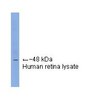391948 Sigma-AldrichHydroxylapatite, High Resolution
Recommended Products
Overview
| Replacement Information |
|---|
| References |
|---|
| Product Information | |
|---|---|
| CAS number | 1306-06-5 |
| Form | White solid |
| Applications |
|---|
| Biological Information |
|---|
| Physicochemical Information |
|---|
| Dimensions |
|---|
| Materials Information |
|---|
| Toxicological Information |
|---|
| Safety Information according to GHS |
|---|
| Safety Information |
|---|
| Product Usage Statements |
|---|
| Packaging Information |
|---|
| Transport Information |
|---|
| Supplemental Information |
|---|
| Specifications |
|---|
| Global Trade Item Number | |
|---|---|
| Catalogue Number | GTIN |
| 391948 | 0 |
Documentation
Hydroxylapatite, High Resolution SDS
| Title |
|---|
Hydroxylapatite, High Resolution Certificates of Analysis
| Title | Lot Number |
|---|---|
| 391948 |













